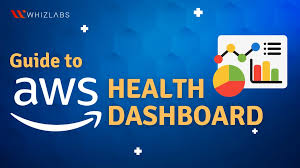
Managing cloud infrastructure efficiently is a challenge for many businesses. Without proactive monitoring and cost optimisation, teams often find themselves reacting to outages, performance issues, or unexpected expenses. Fortunately, AWS provides built-in tools—AWS Health Dashboard and AWS Trusted Advisor—that help organisations stay ahead of potential issues while optimising costs.
Understanding AWS Health Dashboard
One of the most critical aspects of maintaining a stable cloud environment is real-time visibility into system health. AWS Health Dashboard plays a crucial role in AWS infrastructure support, offering a centralised way to monitor AWS service statuses, receive alerts, and take action before issues escalate.
AWS Health Dashboard consists of two components:
- Service Health Dashboard – Provides a broad view of AWS service availability across all regions.
- Personal Health Dashboard – Gives personalised alerts based on the specific AWS services and regions you use.
By leveraging this tool, businesses can proactively detect and mitigate potential disruptions. For example, if an AWS service in your region experiences degradation, you receive real-time notifications along with recommended actions to minimise impact.
Best Practices for Implementation
To make the most of AWS Health Dashboard and Trusted Advisor, organisations need a structured approach. Here are some best practices to ensure maximum efficiency:
Enable AWS Health Dashboard Alerts
Configure notifications via Amazon SNS (Simple Notification Service) to receive immediate alerts about service health issues affecting your AWS environment. These alerts can be integrated with platforms like Slack, Microsoft Teams, or incident response tools.
Regularly Review Trusted Advisor Recommendations
AWS Trusted Advisor provides ongoing recommendations, but many businesses fail to act on them. Setting up a routine (weekly or monthly) to review and implement these insights ensures continuous improvement in cost savings, security, and performance.
Combine with AWS Cost Management Tools
AWS Cost Explorer and AWS Budgets work well alongside Trusted Advisor to provide deeper insights into cost trends and anomalies. By combining these tools, businesses can forecast future spending, identify cost-saving opportunities, and set up budget alerts.
Automate Cost and Performance Optimizations
Instead of manually addressing issues, businesses can automate actions based on Trusted Advisor findings. For example:
- Using AWS Lambda to stop or scale down underutilised EC2 instances.
- Implementing AWS Systems Manager for automated security patching and performance tuning.
These best practices help organisations take full advantage of AWS’s built-in tools, making cloud management more efficient and proactive.
Leveraging AWS Trusted Advisor for Cost Optimization
AWS infrastructure can quickly become costly without the right optimisation strategy. This is where AWS Trusted Advisor comes in, providing businesses with actionable recommendations across five key categories:
- Cost Optimization – Identifies idle or underutilised resources, helping businesses reduce waste.
- Performance – Suggests improvements for better resource utilisation and lower latency.
- Security – Flags potential vulnerabilities such as overly permissive IAM roles or open security groups.
- Fault Tolerance – Recommends redundancy and backup strategies to enhance resilience.
- Service Limits – Helps avoid hitting resource limits that could disrupt operations.
For businesses looking to maximise cost optimization in AWS, Trusted Advisor is invaluable. A company, for instance, might discover that its EC2 instances are overprovisioned, leading to unnecessary spending. By right-sizing these instances based on Trusted Advisor’s recommendations, it can reduce cloud expenses by up to 30%.
With AWS Trusted Advisor, businesses can continuously fine-tune their infrastructure, ensuring they only pay for what they actually need.
Real-World Use Cases and Success Stories
Preventing Downtime with AWS Health Dashboard
A SaaS company using AWS EC2 and RDS noticed performance degradation in one of its services. Thanks to AWS Health Dashboard alerts, their DevOps team was notified before customers experienced major disruptions. They quickly switched traffic to a different availability zone, avoiding downtime and preserving customer trust.
Reducing AWS Costs by 30% with Trusted Advisor
An e-commerce company was paying for multiple underutilised instances. AWS Trusted Advisor flagged these idle resources, prompting them to switch to AWS Savings Plans and eliminate unnecessary services. The result? A 30% reduction in cloud costs, allowing them to reinvest savings into product development.
Conclusion: Stay Proactive, Stay Cost-Efficient
AWS provides powerful tools to help businesses stay proactive and optimise costs, but they only work if you use them effectively. By leveraging AWS Health Dashboard for real-time monitoring and AWS Trusted Advisor for cost and performance optimisation, organisations can prevent outages, reduce expenses, and maintain high efficiency.
If you haven’t already, start exploring these AWS tools today. Small changes can lead to big savings and improved reliability in your cloud infrastructure.
Write and Win: Participate in Creative writing Contest & International Essay Contest and win fabulous prizes.


